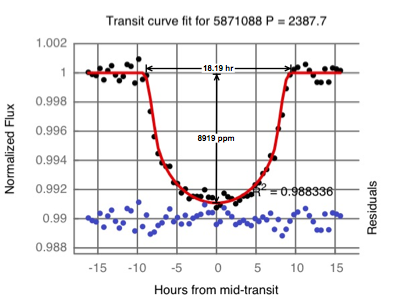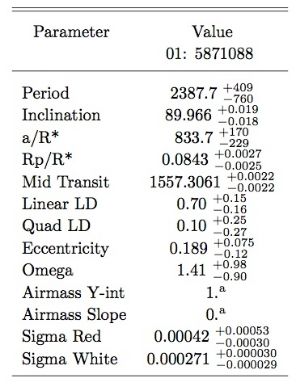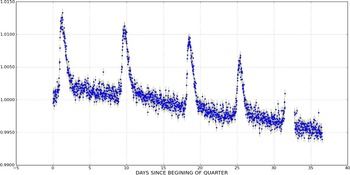Planet Hunters Kepler Q5 light curve for KIC 11412044
Planet Hunters forum Talk member danasibogdan3 flagged this interesting light curve in Kepler Quarter Five that was later suspected by veteran members to be contaminated by a background dwarf nova . We posted an article on the possible dwarf nova at this site on July 24, 2012.
Japanese astronomers Taichi Kato and Yoji Osaki were alerted via our blog article:
"As mentioned in the acknowledgement of the paper, the paper
is based on your discovery of a new dwarf nova in the Kepler
field of KIC 11412044, which we have come to know from your
web page:
http://keplerlightcurves.blogspot.jp/2012/07/dwarf-novae-candidates-at-planet.html "
They recently wrote a science paper that was accepted by
Publications of the Astronomical Society of Japan (PASJ) that you can view
here.
Light Curve for KIC 11412044 by Taichi Kato and Yoji Osaki
" The object is astrophysically very interesting as it has an extremely short orbital period and high outburst activity. "
"We studied one of these background dwarf novae, the one in the field of KIC 11412044 (hereafter J1944). This object was discovered by the Planet Hunters group as a
background SU UMa-type dwarf nova of KIC 11412044, in which superoutbursts and frequent normal outbursts were recognized. 2 Since it was bright enough and it was
frequently included in the aperture mask of KIC 11412044, the outburst behavior can be immediately recognized in Kepler SAP FLUX light curve of KIC 11412044."
"At this location, there is a GALEX (Martin et al. 2005) ultraviolet source GALEX J194419.33+491257.0 [NUV magnitude 21.3(3)] and we identified this source
as the UV counterpart of this dwarf nova (figure 3, Q16), confirming the suggestion in the Planet Hunters’ page. The superhump component and 0.0528 d component were
also confirmed at the location of this object (figure 3, Q14), and we consider that the 0.0528 d signal indeed comes from this dwarf nova."






